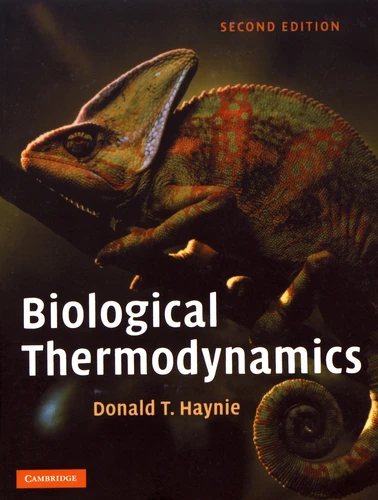Biological Thermodynamics
2nd edition
Par : Formats :
- Paiement en ligne :
- Livraison à domicile ou en point Mondial Relay indisponible
- Retrait Click and Collect en magasin gratuit
- Réservation en ligne avec paiement en magasin :
- Indisponible pour réserver et payer en magasin
- Nombre de pages440
- PrésentationBroché
- FormatGrand Format
- Poids0.942 kg
- Dimensions18,9 cm × 24,5 cm × 2,0 cm
- ISBN978-0-521-71134-0
- EAN9780521711340
- Date de parution14/02/2008
- ÉditeurCambridge University Press
Résumé
This inter-disciplinary guide to the thermodynamics of living organisms has been thoroughly revised and updated to provide a uniquely integrated overview of the subject. Retaining its highly readable style, it will serve as an introduction to the study of energy transformation in the life sciences and particularly as an accessible means for biology, biochemistry and bioengineering undergraduate students to acquaint themselves with the physical dimension of their subject.
The emphasis throughout the text is on understanding basic concepts and developing problem-solving skills. The mathematical difficulty increases gradually by chapter, but no calculus is required. Topics covered include energy and its transformation, the First Law of Thermodynamics, Gibbs free energy, statistical thermodynamics, binding equilibria and reaction kinetics. Each chapter comprises numerous illustrative examples taken from different areas of biochemistry, as well as a broad range of exercises and references for further study.
The emphasis throughout the text is on understanding basic concepts and developing problem-solving skills. The mathematical difficulty increases gradually by chapter, but no calculus is required. Topics covered include energy and its transformation, the First Law of Thermodynamics, Gibbs free energy, statistical thermodynamics, binding equilibria and reaction kinetics. Each chapter comprises numerous illustrative examples taken from different areas of biochemistry, as well as a broad range of exercises and references for further study.
This inter-disciplinary guide to the thermodynamics of living organisms has been thoroughly revised and updated to provide a uniquely integrated overview of the subject. Retaining its highly readable style, it will serve as an introduction to the study of energy transformation in the life sciences and particularly as an accessible means for biology, biochemistry and bioengineering undergraduate students to acquaint themselves with the physical dimension of their subject.
The emphasis throughout the text is on understanding basic concepts and developing problem-solving skills. The mathematical difficulty increases gradually by chapter, but no calculus is required. Topics covered include energy and its transformation, the First Law of Thermodynamics, Gibbs free energy, statistical thermodynamics, binding equilibria and reaction kinetics. Each chapter comprises numerous illustrative examples taken from different areas of biochemistry, as well as a broad range of exercises and references for further study.
The emphasis throughout the text is on understanding basic concepts and developing problem-solving skills. The mathematical difficulty increases gradually by chapter, but no calculus is required. Topics covered include energy and its transformation, the First Law of Thermodynamics, Gibbs free energy, statistical thermodynamics, binding equilibria and reaction kinetics. Each chapter comprises numerous illustrative examples taken from different areas of biochemistry, as well as a broad range of exercises and references for further study.


